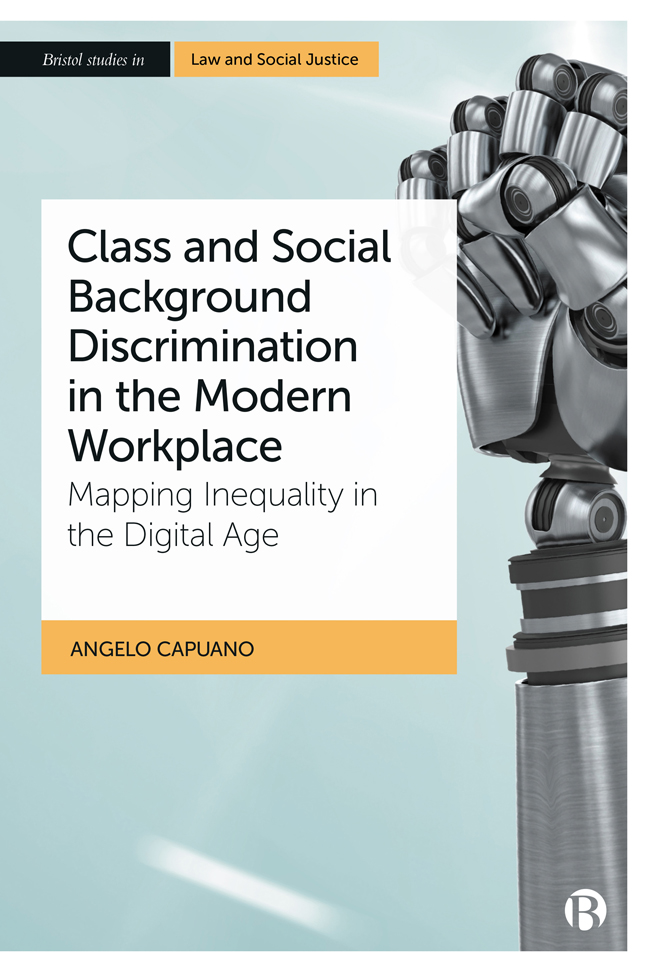 Class and Social Background Discrimination in the Modern Workplace
Class and Social Background Discrimination in the Modern Workplace Book contents
- Frontmatter
- Dedication
- Contents
- Detailed Contents
- Series Editor Preface
- About the Author
- Acknowledgements
- 1 Class and Social Background Discrimination: An Introduction
- 2 Unravelling the Meaning of ‘Social Origin’ Discrimination in Conventions of the International Labour Organization (ILO) and its Applications in the Digital Age
- 3 Mapping the Legal Landscape in Australia, South Africa, Canada and New Zealand and its Applications in the Digital Age
- 4 Social Media in Recruitment, Hiring and Firing Decisions
- 5 Automated Candidate Screening, Algorithms and Artificial Intelligence in Recruitment
- 6 Platform Work and the Post-Pandemic Shift to Remote Work
- 7 Making Future Workplaces Fairer and More Equitable
- References
- Index
5 - Automated Candidate Screening, Algorithms and Artificial Intelligence in Recruitment
Published online by Cambridge University Press: 23 January 2024
- Frontmatter
- Dedication
- Contents
- Detailed Contents
- Series Editor Preface
- About the Author
- Acknowledgements
- 1 Class and Social Background Discrimination: An Introduction
- 2 Unravelling the Meaning of ‘Social Origin’ Discrimination in Conventions of the International Labour Organization (ILO) and its Applications in the Digital Age
- 3 Mapping the Legal Landscape in Australia, South Africa, Canada and New Zealand and its Applications in the Digital Age
- 4 Social Media in Recruitment, Hiring and Firing Decisions
- 5 Automated Candidate Screening, Algorithms and Artificial Intelligence in Recruitment
- 6 Platform Work and the Post-Pandemic Shift to Remote Work
- 7 Making Future Workplaces Fairer and More Equitable
- References
- Index
Summary
Introduction
Employers and recruiters make use of a number of automation technologies to screen job candidates. With advances in technology, and in particular developments in algorithms and AI, employers and recruiters now have access to sophisticated new job candidate screening tools which can help to automate recruitment in ways that were once only imaginable. Algorithms can now be used to filter candidates based on socio-economic data to assist in bolstering an employer's claims that recruitment is fair. AI now has the ability to analyse a job candidate's use of words or facial expressions with the result that robots, rather than humans, now increasingly determine the candidates that should, and should not, proceed in recruitment processes. Digital games can now be used to assess job candidates to determine their suitability for a job or employer. These are examples of the technologies that will be examined in this chapter.
Put simply, an algorithm follows a computerization procedure to transform inputted information into a desired output. For example, the Australian government's use of an Online Compliance Intervention Program (commonly known as ‘Robodebt’) automated the issuing of debt notices to welfare recipients who were, based on the use of an algorithm, deemed to have been overpaid. This algorithm averaged a person's earnings which were reported to the Australian Taxation Office over a series of fortnights, and then compared them with the welfare payments a person received, to calculate whether the person was overpaid welfare. However, the formula's use of fortnightly averages (as opposed to actual earnings) meant that the algorithm outputted exaggerated or incorrect debt figures.
AI refers to the ability of a computer or robot to perform or ‘execute cognitive tasks with minimal or no human interaction’. It refers to the way computers can simulate human learning and decision-making through the use of mathematics and logic, and it can also be interconnected with a process called machine learning whereby the computer learns from its experience without the need for direct instruction from humans. For example, a machine learning model developed by Amazon sought to automate recruitment decisions (that is, vet applicants) by observing patterns in resumes that were submitted over a 10-year period (most of which came from men), but, problematically, the system had learned to prefer male candidates.
- Type
- Chapter
- Information
- Class and Social Background Discrimination in the Modern WorkplaceMapping Inequality in the Digital Age, pp. 150 - 176Publisher: Bristol University PressPrint publication year: 2023


